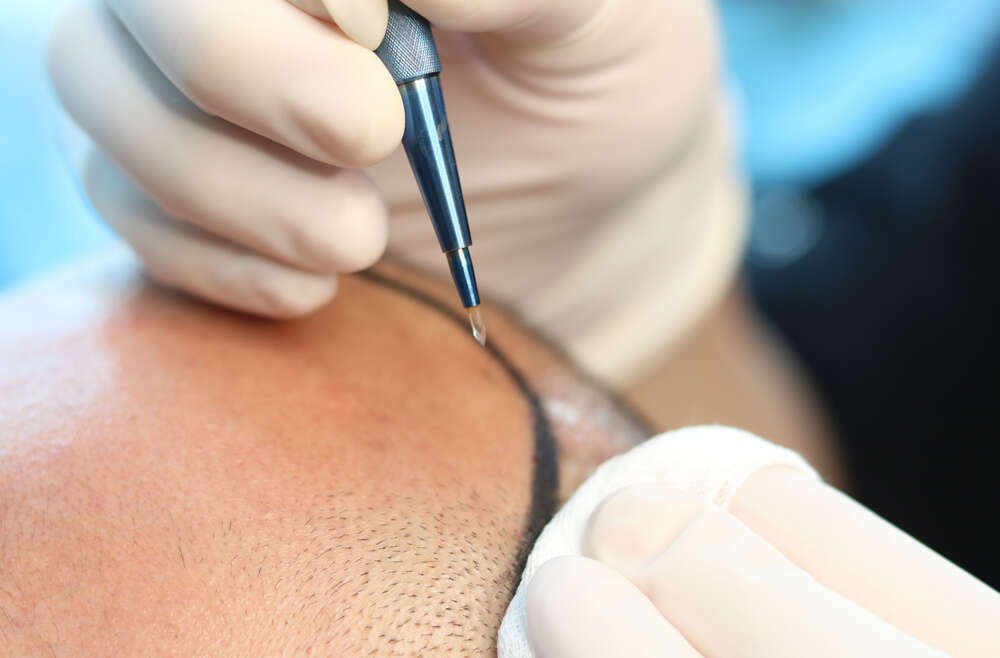Are you planning to wear a hat after your hair transplant but feeling unsure about the dos and don’ts? Whether it’s for protection from the sun or simply a fashion statement, hats can be a great addition to your post-transplant look. But with so many styles and materials available, how do you know which ones are safe to wear and which ones could damage your new hair growth? In this blog post, we’ll share some essential tips on what you should and shouldn’t do when wearing hats after a hair transplant. So put on your favorite cap or fedora, and let’s dive in!
Table of Contents
What is a Hair Transplant?
A hair transplant is a surgical procedure that involves taking hair from one part of the head and transplanted to another area where It is thinning or balding. The new hair will usually grow in the transplanted area within a few months and continue to grow for the rest of your life.
There are two main types of hair transplant procedures: follicular unit transplantation (FUT) and follicular unit extraction (FUE). With FUT, a strip of skin containing donor hair is removed from the back or side of the head. The individual hairs are then separated into grafts and transplanted to the desired area. FUE removes each follicle individually, which means there is no linear scar. Both procedures are done under local anesthesia and take several hours.
After a hair transplant, it’s important to follow all post-operative instructions given to you by your surgeon. One important instruction is to avoid wearing hats for at least two weeks after surgery. This gives the transplanted follicles time to heal and start growing new hair. Once they’ve healed, you can resume wearing hats as normal.
Do’s and Don’ts of Wearing Hats After a Hair Transplant
After a hair transplant, it’s important to take extra care of your new hair. One way to do this is to be mindful of how you wear hats. Here are some dos and don’ts to follow:
Do:
-Wear a hat that fits well and isn’t too tight. A snug fit is fine, but if the hat is too tight it can put too much pressure on the transplanted hair and cause damage.
-Choose a hat made from breathable materials like cotton or linen. This will help keep your head cool and prevent sweat from damaging your new hair.
-Avoid wearing hats in windy conditions. The wind can tangle and damage newly transplanted hair.
Don’t:
-Wear a baseball cap or any other hat with a brim that comes down close to your forehead. The brim can rub against your transplant site and disrupt the healing process. It can also put unnecessary pressure on the transplanted hair follicles which can damage them. If you must wear a brimmed hat, make sure the brim is not resting on your forehead by wearing it slightly tilted back.
-Don’t wear a hat for more than an hour at a time right after your transplant surgery. This gives your scalp time to recover and prevents excessive sweating which can lead to infection.
Benefits of Not Wearing a Hat
There are many benefits to not wearing a hat after a hair transplant. First, it allows your transplanted hair to get used to the new environment and grow accustomed to the new hair follicles. Second, not wearing a hat gives your scalp time to heal and the newly transplanted hair time to adjust. Additionally, hats can cause friction and irritation on the scalp, which may lead to inflammation and infection. Finally, not wearing a hat lets you show off your new hair!
Types of Hats To Avoid After a Hair Transplant
There are certain types of hats that you should avoid after a hair transplant. These include:
1. Baseball caps: Baseball caps can put pressure on the transplanted this follicles and lead to shedding.
2. Beanies: Beanies can also put pressure on the transplanted this follicles and lead to shedding.
3. Skullcaps: Skullcaps can irritate the scalp and cause itching and flaking.
4. Wigs: Wigs can rub against the transplanted hair follicles and cause them to become irritated or damaged.
Tips for Wearing a Hat After a Hair Transplant
If you’ve recently had a transplant, you may be wondering if it’s okay to wear a hat. The answer is yes, but there are a few things to keep in mind. Here are some tips for wearing a hat after a transplant:
– Don’t wear a tight-fitting hat. A tight-fitting hat can put pressure on your transplanted hair and cause it to fall out. Choose a hat that’s loose-fitting and comfortable.
– Avoid wearing a hat for too long. If you must wear a hat, take it off every few hours to give your scalp a break.
– Be careful with the type of hat you choose. Some hats, like baseball caps, can cause friction on your scalp which can lead to irritation or even scarring. Stick to softer fabrics like cotton or wool.
– Don’t forget to protect your skin. If you’ll be spending time in the sun, make sure to apply sunscreen to your scalp before putting on your hat.
Conclusion
Wearing a hat after a hair transplant is an important part of the healing process and can help to protect your new hair from sun damage and other environmental factors. However, it’s important that you take the proper precautions when wearing hats, such as avoiding tight-fitting hats or choosing lightweight materials when possible. By following these tips and taking care of your scalp, you’ll be able to enjoy all the benefits of wearing a hat without compromising your results.

You May Also Like:Understanding the Technical Variations Between Canal FUE and DHI Hair Transplants


